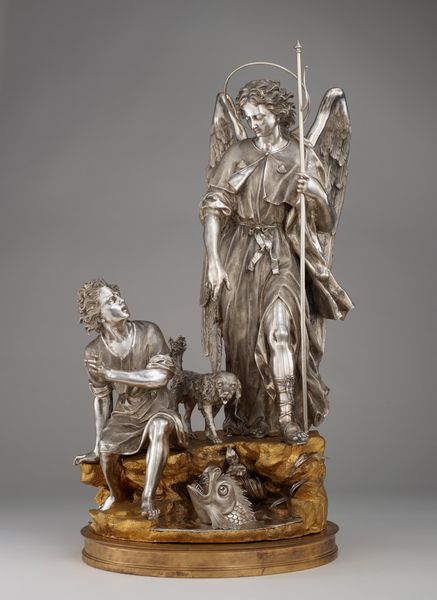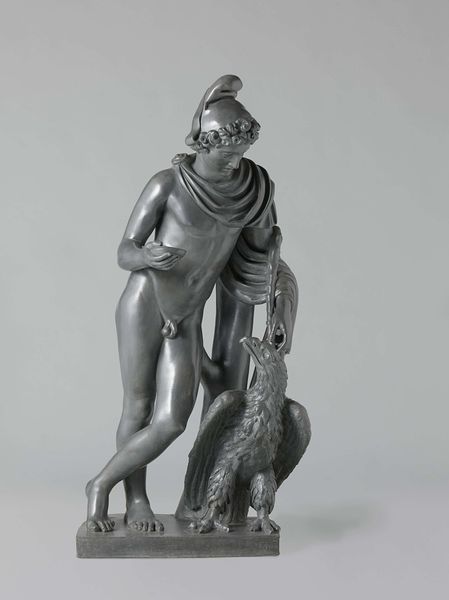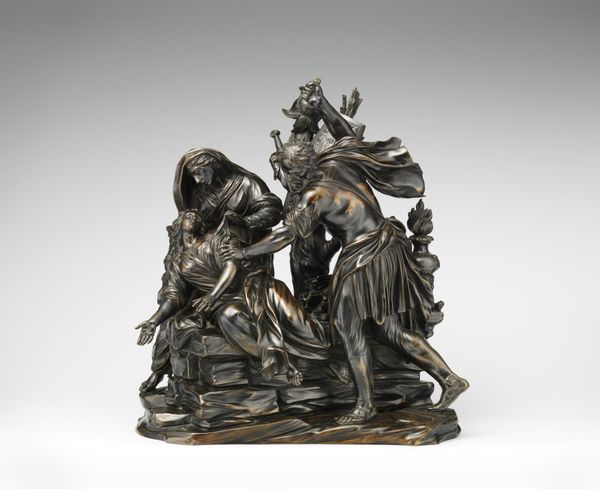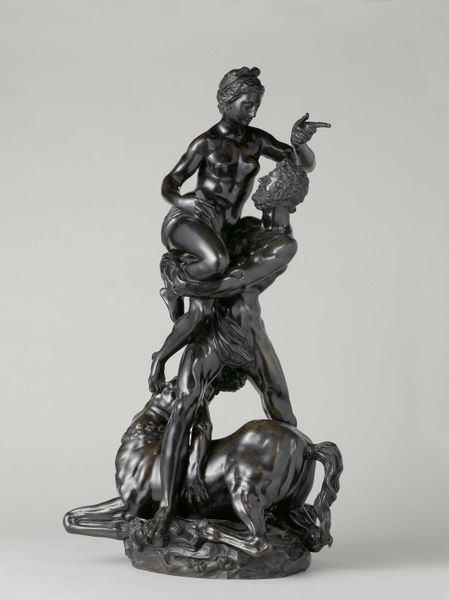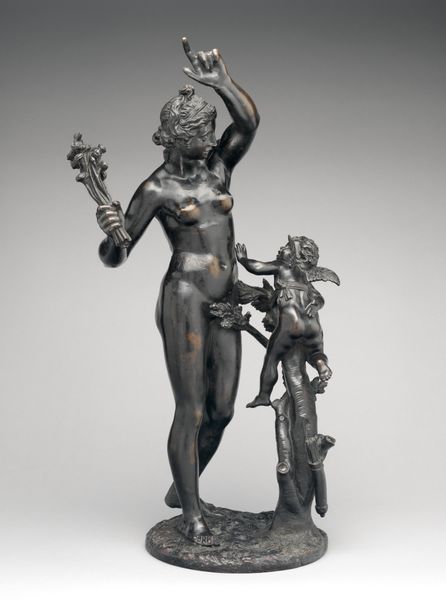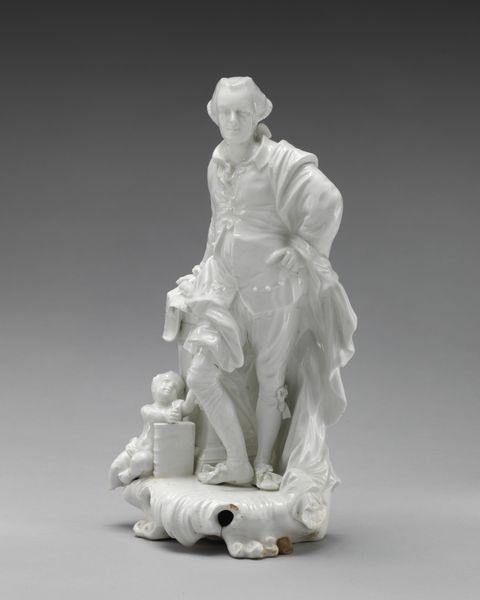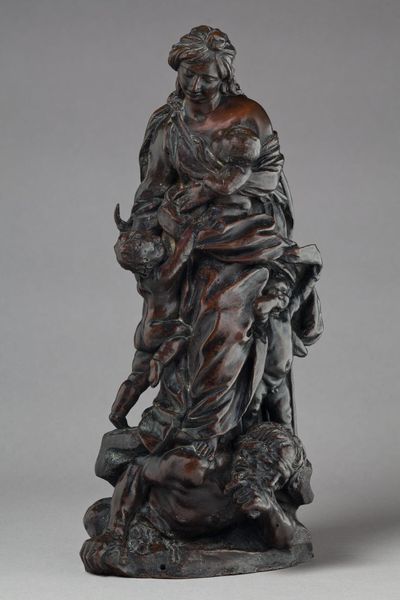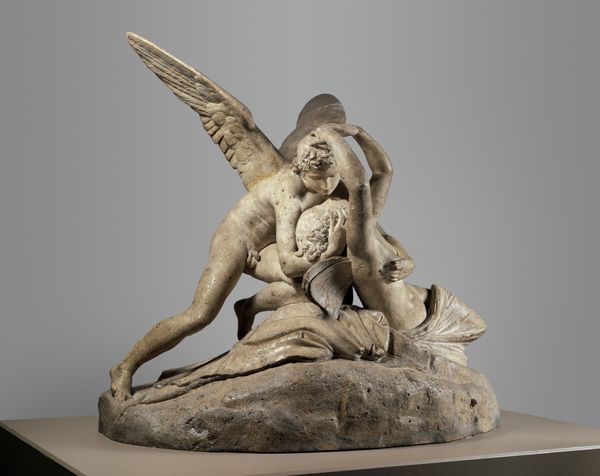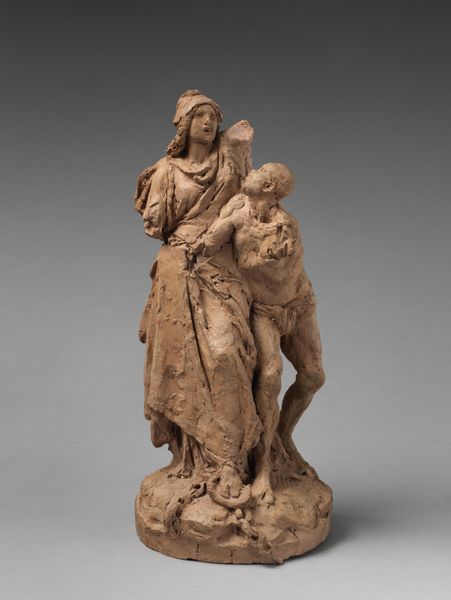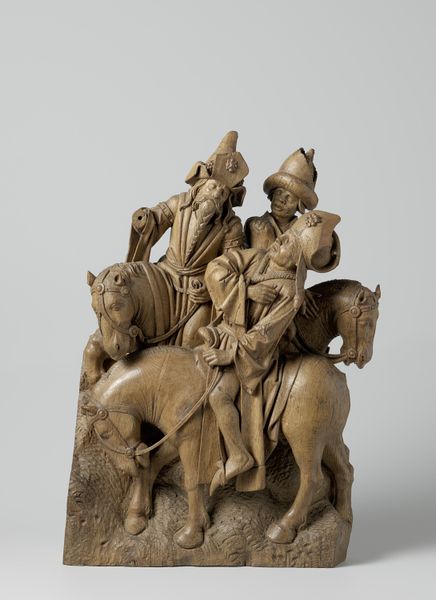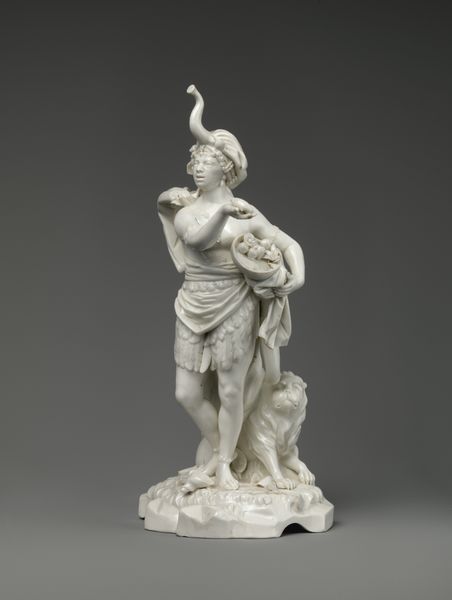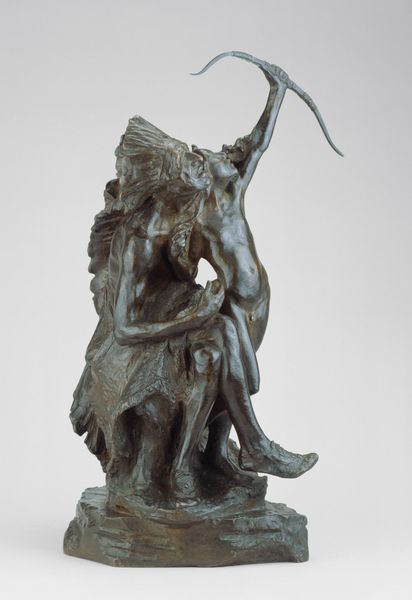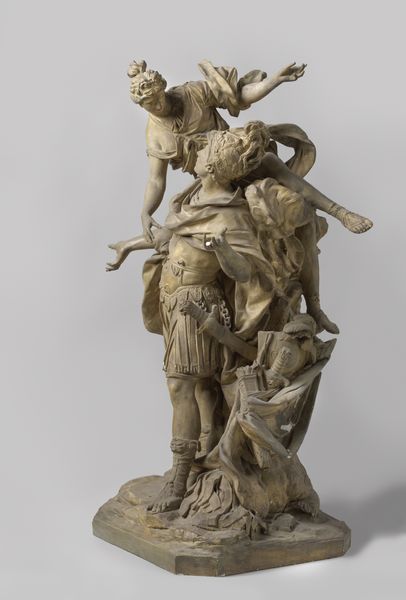
carving, bronze, sculpture
#
carving
#
allegory
#
stone
#
sculpture
#
bronze
#
mannerism
#
figuration
#
11_renaissance
#
sculpting
#
sculpture
#
statue
Dimensions: height 53.5 cm, width 21.0 cm, depth 29.0 cm
Copyright: Rijks Museum: Open Domain
Curator: Girolamo Campagna's bronze sculpture, "Minerva and Cupid," dates from around 1600. Editor: It’s quite striking. The texture and weight of the bronze give it such gravitas. I’m immediately drawn to the way the light plays across the surfaces. Curator: Well, that bronze contributes heavily to its symbolic reading as well. In this Mannerist composition, Minerva, the Roman goddess of wisdom and strategic warfare, stands prominently armored with Cupid tugging at her. Consider the deep cultural roots linking her to the earlier Greek goddess Athena. Editor: Indeed, the Mannerist style is evident in the elongated forms and somewhat artificial poses. What's fascinating to me is the tension between Minerva’s formidable, armored presence and the softness implied by Cupid's presence. Curator: Precisely. The allegory invites consideration about the conflict between love and reason, a recurring theme in Renaissance thought. Cupid’s presence challenges Minerva's traditional association with chastity and intellectual pursuits. The eagle at Minerva's side furthers that tie to governance and rational decision-making, a quality often associated with leadership and power. Editor: The details in the armor are fantastic, especially contrasted against Cupid's smooth skin. I also notice she carries a spear. Curator: Right. Her attributes point to that conscious use of Classical themes adapted to Renaissance sensibility. The pairing disrupts a bit, almost warning against love's potentially irrational influences. Editor: Seeing this work allows one to almost tactilely experience Mannerism. It's quite rare. Its enduring quality and conceptual underpinnings definitely offer plenty of cultural throughlines to contemplate. Curator: The piece beautifully represents the cultural fascination of the time, the blend of antiquity with humanist philosophies. Hopefully that provides deeper meaning to beholders of this artifact of Western cultural history.
Comments
rijksmuseum about 2 years ago
⋮
In the course of the 16th century, Venice grew into one of the most important centres for bronze sculpture in Italy. Although many small workshops mass-produced everyday objects, refined and unique bronzes were also made. This Minerva is an example of the high level of finish of the best Venetian bronzes.
Join the conversation
Join millions of artists and users on Artera today and experience the ultimate creative platform.
